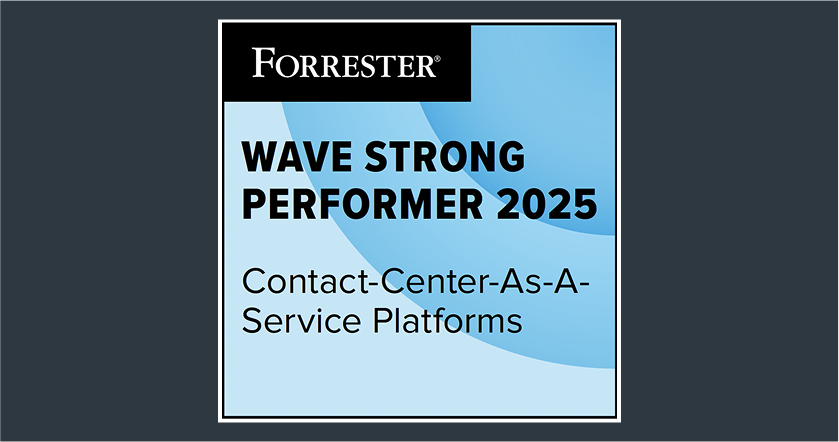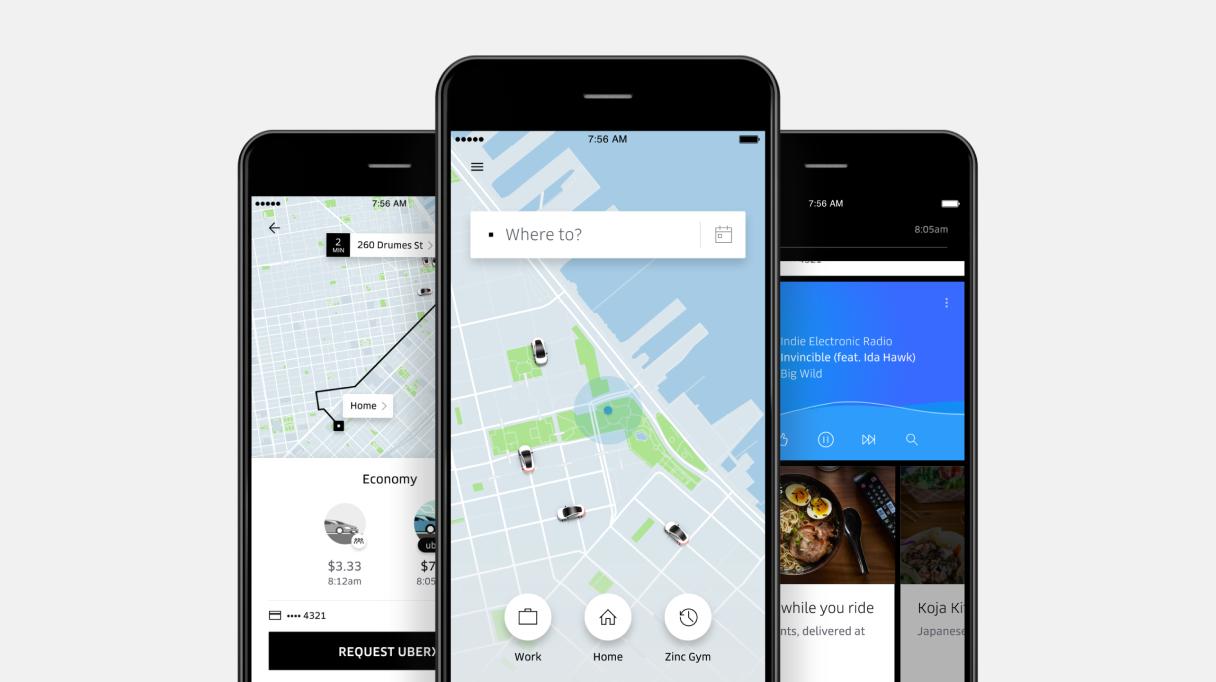What is automatic speech recognition?
Automatic speech recognition (ASR) is an advanced technology that enables machines to understand and interpret spoken language. It relies on complex algorithms, deep learning models and natural language processing techniques to analyze audio signals, recognize individual words and convert speech into text.
Automatic speech recognition systems are typically trained on extensive datasets comprising diverse speech samples, which helps improve their accuracy and adaptability to various accents, dialects and noisy environments.
How ASR works
The process of automatic speech recognition involves multiple stages. Initially, the system captures audio input through a microphone or other recording devices. This audio is then processed through a series of algorithms that break down the sound waves into smaller units known as phonemes—the fundamental building blocks of speech. The ASR system compares these phonemes against a vast database of language patterns, using statistical models and machine learning techniques to predict and generate the most likely corresponding text.
In recent years, auto voice recognition technology has evolved significantly, finding applications across various industries. For instance, voice-activated assistants like Amazon’s Alexa and Apple’s Siri leverage automatic speech recognition to understand and respond to user commands, facilitating seamless human-computer interaction.
In transcription services, automatic voice recognition efficiently converts spoken content into text, reducing the time and effort required for manual transcription. In automated call centers, ASR systems handle customer inquiries, enhancing service speed, accuracy, and overall customer experience.
Core components of automatic speech recognition systems
Automatic speech recognition systems rely on three main components: the acoustic model, the language model and the lexicon. Together, these elements form a cohesive system that accurately transcribes spoken language into text.
Acoustic model
The acoustic model is a critical component that represents the relationship between audio signals and the phonemes—the smallest units of sound in speech. This model is trained using large datasets of recorded speech and their corresponding text transcripts, allowing it to learn the intricate nuances of human speech, including different accents, intonations, and speaking speeds.
During operation, when an audio input is received, the acoustic model analyzes the sound waves and predicts the most likely sequence of phonemes. This prediction forms the foundation for converting speech into text. Modern acoustic models often leverage deep neural networks (DNNs) or recurrent neural networks (RNNs) to enhance accuracy, especially in handling variations in speech patterns and noisy environments.
Language model
The language model plays a crucial role in predicting the sequence of words in a given language. It is trained on extensive text corpora, enabling it to understand the probability of word sequences. For example, the model recognizes that "how are you" is a common phrase in English, making it less likely to confuse it with a similar-sounding but contextually inappropriate phrase like "how you are."
By utilizing these probabilities, the language model refines the predictions made by the acoustic model, ensuring that the generated text is not only phonetically accurate but also contextually coherent and meaningful. In more advanced automatic speech recognition systems, language models are not just used, but they are enhanced with transformers or other deep learning architectures. This enhancement marks the progress and innovation in the field, improving their ability to understand context and maintain fluency in transcription.
Lexicon
The lexicon, or pronunciation dictionary, serves as a bridge between phonemes and words. It contains mappings of how words are pronounced, listing the specific phonemes corresponding to each word. For instance, the word "cat" might be represented in the lexicon as /k/ /æ/ /t/.
The lexicon, a crucial component, ensures that the phoneme predictions from the acoustic model are accurately matched to actual words in the language, playing a significant role in the final step of converting spoken language into text. The lexicon is particularly important for handling homophones (words that sound the same but have different meanings) and ensuring that the correct word is chosen based on context.
Evolution of automatic speech recognition systems
Automatic speech recognition technology has seen remarkable advancements from humble beginnings to today’s sophisticated systems. Let's explore its evolution:
Early days to now—a brief history
In the early days, automatic speech recognition systems struggled with simple commands. The first system, Automatic Digit Recognizer (Audrey), developed by Bell Labs in the 1950s, could only recognize digits. Statistical language models improved accuracy by the 1980s and 1990s but could not comprehend the context and natural language processing. The rise of deep learning in the 2010s marked a significant milestone, boosting accuracy and enabling more complex applications.

Technological advancements driving ASR
Deep learning algorithms
Deep learning algorithms improve ASR’s accuracy. Neural networks can now process vast amounts of data, learning to recognize patterns and nuances in speech more effectively than ever before.Big data and training
The availability of big data has been crucial to train automatic speech recognition systems. Large datasets of spoken language allow models to learn diverse accents, dialects and speaking styles, making ASR more versatile.Cloud computing
The rise of cloud computing has increased the processing power and accessibility of automatic speech recognition technology. With cloud-based automatic speech recognition services, you can deploy advanced speech recognition capabilities without extensive on-premises infrastructure, making the technology more accessible and scalable.
Top 6 applications of ASR technology in contact centers
ASR is a remarkable technology reforming several other technologies we interact with daily. Its ability to accurately transcribe spoken words into text has far-reaching implications across various sectors.
1. Transcription services
An automatic speech recognition system converts spoken language into written text for various purposes, including note-taking, meeting transcriptions and media captioning. In note-taking, an automatic speech recognition system helps contact center agents quickly document key points during discussions, making it easier to capture essential information without manual effort.
Automatic speech recognition technology plays a vital role in ensuring that all spoken details during meetings are accurately transcribed. This accuracy is key to facilitating better decision-making and record-keeping, particularly in contact centers where meetings often involve strategic discussions, training sessions or client communications.
However, poor automatic speech recognition implementation in transcription services can lead to inaccuracies, misinterpretations and missing critical information, which can impact business decisions and legal compliance.
How Sprinklr helps
Sprinklr's advanced conversational analytics software accurately transcribes live conversations with over 85% precision, thanks to its proprietary automatic speech recognition (ASR) technology. The software can effectively differentiate between the agent and customer responses in both mono and stereo calls, leading to better comprehension.
Moreover, Sprinklr AI+ streamlines post-call processes by generating concise case summaries featuring critical actionable insights. This empowers agents to swiftly grasp essential points without combing through entire conversation transcripts. This efficient approach saves time and significantly elevates the quality of follow-up actions, providing your team with the confidence and reassurance necessary to deliver exceptional customer service.

🔍 Must Read: How to Use Conversational AI for Customer Service
2. Language learning tools
Automatic speech recognition technology significantly enhances language learning tools by providing real-time speech recognition and feedback. These tools help learners improve their pronunciation, fluency, and listening skills by evaluating spoken language and offering corrective suggestions, making the learning process more interactive and effective.
For example, language learning apps can use automatic speech recognition to assess a user’s spoken phrases, instantly providing feedback on pronunciation accuracy. This real-time interaction makes the learning experience more engaging and personalized, enabling learners to progress at their own pace.
Imagine a language learner practicing Spanish. The automatic voice recognition-powered app listens to their pronunciation of phrases and words, identifies mistakes and offers corrections. This immediate feedback loop accelerates learning and builds confidence in speaking a new language. The ability to receive instant, constructive feedback is precious for learners who may not have access to native speakers or traditional language classes.
However, if the automatic speech recognition system is not well-trained or lacks adequate language-specific data, it may misinterpret the learner’s speech, provide incorrect feedback, and potentially hinder the learning process. Therefore, it’s crucial for these tools to be backed by robust automatic voice recognition models trained on diverse and extensive datasets to ensure accurate and helpful feedback.
3. Call routing
Automatic speech recognition technology enables intelligent call routing by accurately understanding a caller's spoken requests or issues. Instead of navigating through cumbersome, multi-level IVR, callers can simply state their needs in natural language. The automatic speech recognition system then interprets these requests and directs the call to the appropriate department or agent, significantly reducing wait times and improving overall customer satisfaction.
💡 Do you know
Sprinklr’s AI-powered voice assistant intelligently segregates and prioritizes every call based on context and intent. It automatically routes calls to the most suitable agent with the right subject matter expertise, ensuring faster and more accurate resolution of customer issues.
But here’s the best part: you maintain a complete record of the customer’s context throughout the process. The voice assistant automatically transcribes previous conversations and presents them to the routed agent in an instantly consumable format. This allows your agents to seamlessly pick up the conversation exactly where the customer left off, ensuring continuity and building customer confidence.

4. Healthcare documentation
In the fast-paced healthcare environment, efficient and accurate documentation is essential. By converting doctors' spoken notes into written records, automatic speech recognition technology allows healthcare professionals to focus more on patient care and less on paperwork. Instead of manually typing out notes, doctors can dictate their observations, diagnoses, and treatment plans directly into their devices, with the automatic speech recognition system instantly transcribing the information into the patient's electronic health record (EHR).
However, healthcare demands automatic voice recognition systems to be exceptionally precise. Medical terminology and the critical nature of patient records mean that even a small mistake in transcription can have serious consequences for patient health and treatment outcomes. Therefore, specialized automatic speech recognition solutions are necessary to meet the high standards of accuracy and reliability required in the medical field.
5. Speech analytics
By transcribing and analyzing large volumes of customer calls, ASR-powered speech analytics tools can identify trends, detect customer sentiment and uncover key patterns that drive decision-making and strategy.
For instance, contact centers use speech analytics to monitor customer satisfaction, track the effectiveness of agent interactions and even identify potential compliance issues. By examining the language, tone and context of customer conversations, you can better understand your customers' needs, preferences and pain points. This allows for more targeted improvements in service delivery and customer experience.
Moreover, speech analytics can be used to detect emerging issues, such as recurring complaints or service disruptions, enabling proactive problem-solving. The technology can also assist in call center agent training and coaching agents by highlighting areas where communication may be falling short or where specific skills can be enhanced.
6. Accessibility for individuals with disabilities
Automatic voice recognition systems play a pivotal role in making digital content more accessible to individuals with disabilities. By converting spoken language into text, ASR enables those with hearing impairments to understand spoken content through real-time captions. It also empowers individuals with physical disabilities by allowing them to interact with devices and software using voice commands, thereby reducing the need for manual input.
For example, someone with a hearing impairment can benefit from real-time ASR-enabled captioning during video calls, lectures or conferences, ensuring they don't miss out on crucial information. Likewise, individuals with limited mobility can navigate the internet, compose emails and control smart home devices using voice commands, significantly enhancing their independence and quality of life.
Also Read: Voice Analytics: A Detailed Guide
Challenges faced with automatic speech recognition today
Despite its advancements, automatic speech recognition technology is not flawless. Here are some of the major challenges it faces:
1. Diverse accents
While automatic voice recognition has made significant strides, several challenges hinder its widespread adoption and perfect performance. One of the most prominent challenges is accents and dialects. An automatic speech recognition system often struggles to accurately transcribe speech from individuals with accents or dialects that deviate from the training data. This can lead to errors and misunderstandings, particularly in diverse populations or regions.
How to tackle: Encourage continuous training with diverse datasets to improve recognition accuracy for different accents. Also, machine learning algorithms that adapt over time should be incorporated.
2. Background Noise
Automatic speech recognition systems may have difficulty distinguishing speech from background noise, leading to inaccurate transcriptions. This is especially problematic in noisy environments, such as call centers or public places. Additionally, low-quality audio can impact the automatic speech recognition system’s performance, as poor sound quality can make it difficult for the system to recognize individual words and phrases accurately.
How to tackle: Utilize noise-canceling technologies and advanced filtering techniques to reduce background noise and enhance the clarity of the audio input.
3. Accuracy
Attaining high accuracy is a persistent challenge, especially in real-time applications where rapid processing is crucial. Errors in transcription, such as misinterpreting 'weather' as 'whether,' can lead to misunderstandings and have a direct impact on the user experience.
How to tackle: Regular updates and improvements, such as refining language models and incorporating user feedback, along with extensive training on large datasets, can help increase your accuracy rates.
4. Homophones and context
Homophones, such as "flour" and "flower," pose a significant challenge for ASR systems. These are words that sound the same but have different meanings, and without proper context, the system can make mistakes in transcription.
How to tackle: Implement context-aware algorithms that use natural language processing to understand the meaning based on surrounding words to manage this issue.
5. Multilingual support
ASR systems must support multiple languages and dialects, requiring extensive resources and training to ensure accurate recognition across various languages.
How to tackle: Develop multilingual models and leverage transfer learning techniques to help ASR systems effectively support a broader range of languages.
Automatic speech recognition (ASR) is revolutionizing how you interact with technology, offering remarkable advancements in transcription and analysis. The integration of generative AI has further enhanced ASR capabilities, making it an indispensable tool for businesses seeking to leverage innovative technology for superior customer service.
Sprinklr Service harnesses the power of automatic speech recognition combined with generative AI to provide a robust suite of tools designed to elevate your customer interactions. The advanced conversational analytics software delivers:
Real-time transcription across 20+ languages
Benefit from over 85% transcription accuracy with our specialized automatic speech recognition technology.
Effortlessly distinguish between agent and customer responses, enhancing the quality of your insights.
Schedule a demo with our experts today and discover what’s possible with Sprinklr.
Frequently Asked Questions
Thank you for contacting us.
A Sprinklr representative will be in touch with you shortly.
Contact us today, and we'll create a customized proposal that addresses your unique business needs.
Request a Demo
Welcome Back,
No need to fill out any forms — you're all set.








